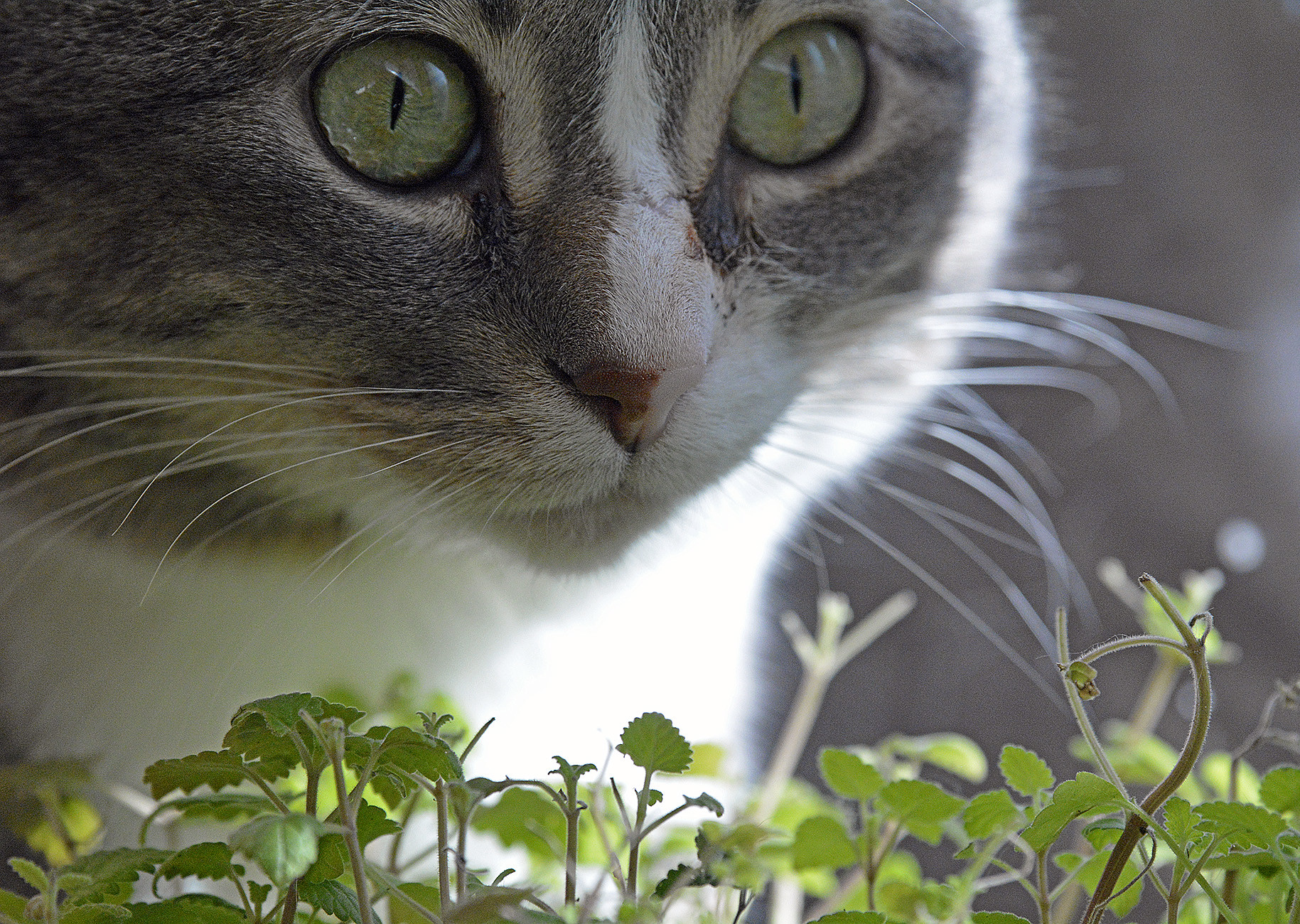Feline Fine: The Benefits of Catnip
For many cat owners, busting boredom in their feline friend is a sizable concern. Cats are notoriously choosy about their toys, and an under-stimulated cat might result in shredded furniture and shattered knick-knacks.
 One way owners can capture their cat’s interest is with catnip. Dr. Lori Teller, a clinical associate professor at the Texas A&M College of Veterinary Medicine & Biomedical Sciences, explains more on what this plant is and how owners can use it to enrich their cat’s environment.
One way owners can capture their cat’s interest is with catnip. Dr. Lori Teller, a clinical associate professor at the Texas A&M College of Veterinary Medicine & Biomedical Sciences, explains more on what this plant is and how owners can use it to enrich their cat’s environment.
Catnip is a member of the mint family, according to Teller.
Formally known as Nepeta cataria, catnip is a perennial herb that can grow to be up to three feet high. It contains a chemical called nepetalactone in its leaves and stems that can impact your cat’s behavior.
When cats are exposed to nepetalactone by smell, it acts as a stimulant, causing some cats to have an uptick in activity. When ingested, nepetalactone has a sedative effect. It is thought that this chemical mimics natural pheromones, acting on those receptors to elicit a response.
“Catnip has a psychoactive effect, meaning that it can make cats high for about 15-30 minutes after exposure,” Teller said.
Cats under the influence of catnip may roll around, dart across the room, flip over, and exhibit general hyperactivity. Others may be very chill. However, Teller warns that “not every cat is susceptible to these effects.”
Cat owners interested in introducing this herb to their pet’s environment may do so by purchasing toys containing catnip, or they may purchase the herb loose and sprinkle it over areas they would like their cat to frequent, such as a scratching toy.
The herb can be given fresh or dry, though some cats might have a preference in which form they like best. Crafty cat owners might consider growing the herb themselves, as it thrives in most of North America and is relatively easy to care for.
Though catnip can be a great way to enrich your furry friend’s routine, owners should be cautious in how often they expose their cat to this herb.
Catnip is unlikely to cause an overdose, but too much can cause nausea and vomiting. If this occurs, pet owners should remove catnip from their cat’s environment.
Frequent exposure might also reduce the effect catnip has on your cat.
Pet owners concerned about introducing catnip to their pet’s routine should, as always, consult with their veterinarian. Catnip can be a unique and stimulating treat for your pet that may enrich their playtime and provide an adorable display of activity for you to watch!
Pet Talk is a service of the College of Veterinary Medicine & Biomedical Sciences, Texas A&M University. Stories can be viewed on the web at vetmed.tamu.edu/news/pet-talk. Suggestions for future topics may be directed to editor@cvm.tamu.edu.


